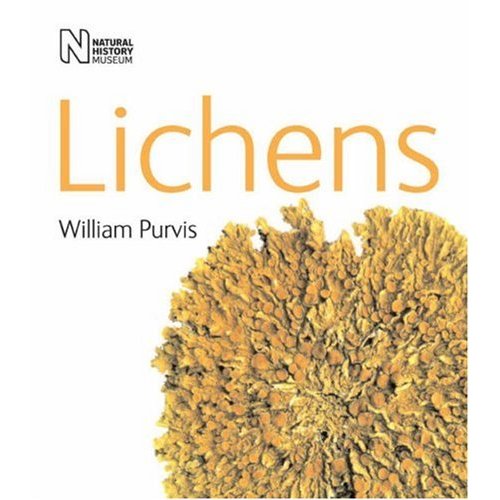William Purvis, Lichens, London: Matural History Museum, 2000.
During a brief visit to London, I went to the Natural History museum to find any trace of lichen or lichenologist’s knowledge to find out more about the odds of victual lichens. They’re a remarkable phenomenon, a kind of living fossil and siamese-organism — half-plant, half-fungus —a mini-eco system in itself.
Despite the NHM’s online collections showing promising photographs of prolific lichen specimens, there weren’t any to be found on display save for a few unwitting examples on rock specimens in the geology and palaeontology collections — this is of course because despite the fact they look dead, they are very much alive and can not be maintained in the sterility of a museum environment.
I did however end up talking to a kind plant preparator (pressing plant specimens for the collection) who told me about the ways of modern day herbarium preparation as he was adhering a maidenhair spleenwort (also edible). He also tipped me about the museum’s own lichenologist William Purvis who has put together a very comprehensive book on the chemical diversity of lichens, their identification and their uses as bioremediators, urban lichens as pollution barometers and lichen use in the dye trade, pharmaceutical, perfume industries, as well as use as a food source. Without delay I bought a copy. The chapter ‘Economic uses’ plots some of the historical and contemporary commercial uses of lichens. Aside from the medical properties (antibiotic) or perfume (strong musk-like fragrance) of particular lichen species one fascinating anecdote described by Purvis is the gathering of lichens for the Scottish dye trade in the 19th century. Lichens were collected from regions along the Scottish ad Scandinavian coastlines and brought to a factory in Glasgow where they were steeped in ammonia produced by distilling human urine collected from the suburbs of Glasgow (about 9,100-13,600 litres were needed daily!).
